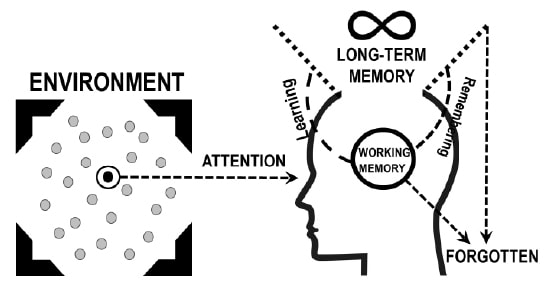Research shows, the less work readers need to put into reading, the more they will find sources credible, and the better they will connect with the messages.
I’ve been talking to people about the brain and reading, and readability, and writability. As plain language writers, we always seek information about our reading audience. How people use their brains to read is the most common feature we all share.
No one is born with a reading program or organ; each must learn to read. To read, our brains use many brain structures. We also use the brain’s default operating system. And our brains continuously modify that system. For example, nowadays our reading practice is to skim, skip, or scan – we’ve learned these practices from reading online.
How do we think?
Our default operating system
We gather information through our senses. We process the information while it is still live in sensory memory. It moves along to our short-term memory, where we both hold and work on it. We check our long-term memory for matching patterns to help us identify the new information.
The human reaction is to predict what will happen next and to prepare a response. Then reality unfolds in front of us, and we learn if our prediction was correct. If we were wrong, we predict again, adding the latest sensory information.
Still working in our short-term memory, we decide what to do with this information. Do we dispose of new information as irrelevant to our needs, or send it along, and connect it to another memory in long-term storage?

The method we use for reading
When we see a printed word, we pronounce the sounds to identify the word from our experience. We are listening in our minds to the sounds (phonemes) while we visually process what we see – letter symbols – as language.
Meanwhile, we try to identify the word’s function in the sentence: verb, subject, other. Knowing its function helps us decide which meaning is the one intended. In English, our brains expect a sentence structured subject-verb-object (S-V-O), the default pattern for sentences.
So what?
For the reasons outlined above, when writing English, we should choose
- familiar, everyday, conversational words (I use online word lists of the most-frequently used words, like these Oxford 3000 Word List, Canadian Resources for Learning English, and International Biz Wordlist.); and
- short and simple sentences in the S-V-O pattern with no phrases embedded between them.
Neuroscience provides many more clues to producing fluent, easy reading. The writer who uses these tactics will make reading more efficient, effective, and memorable.
Want to learn more?
Send Cheryl your questions. You can also check her website for more information and links to webinars on the subject.
